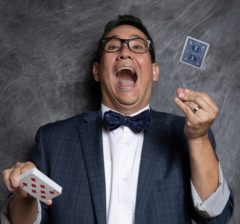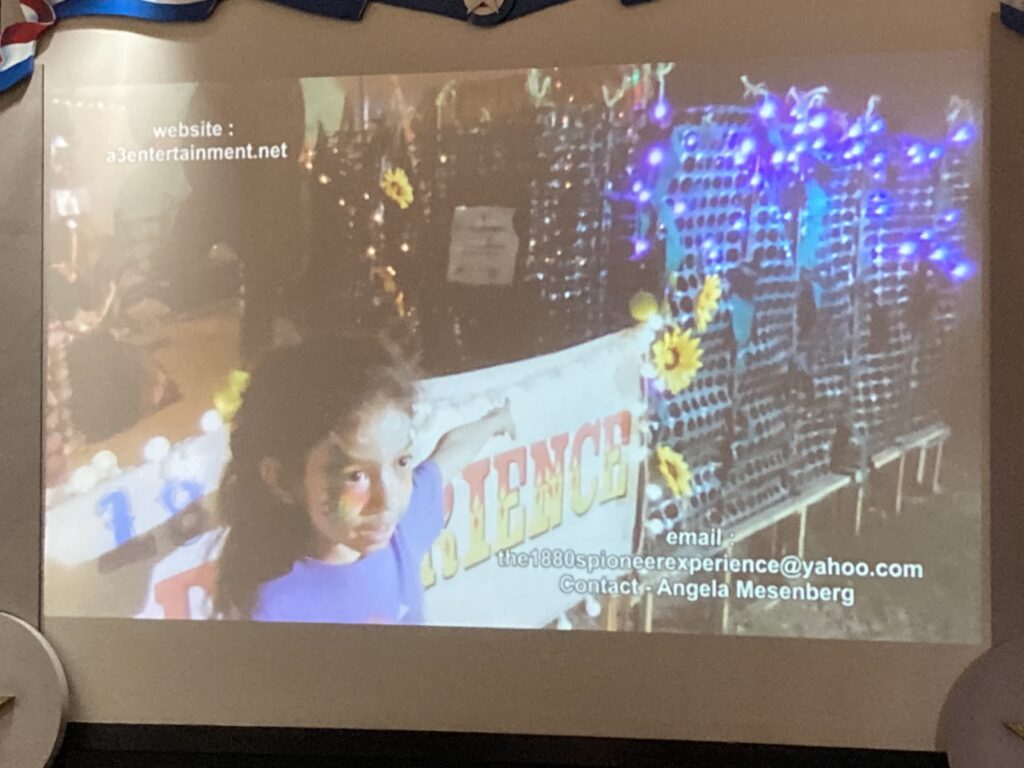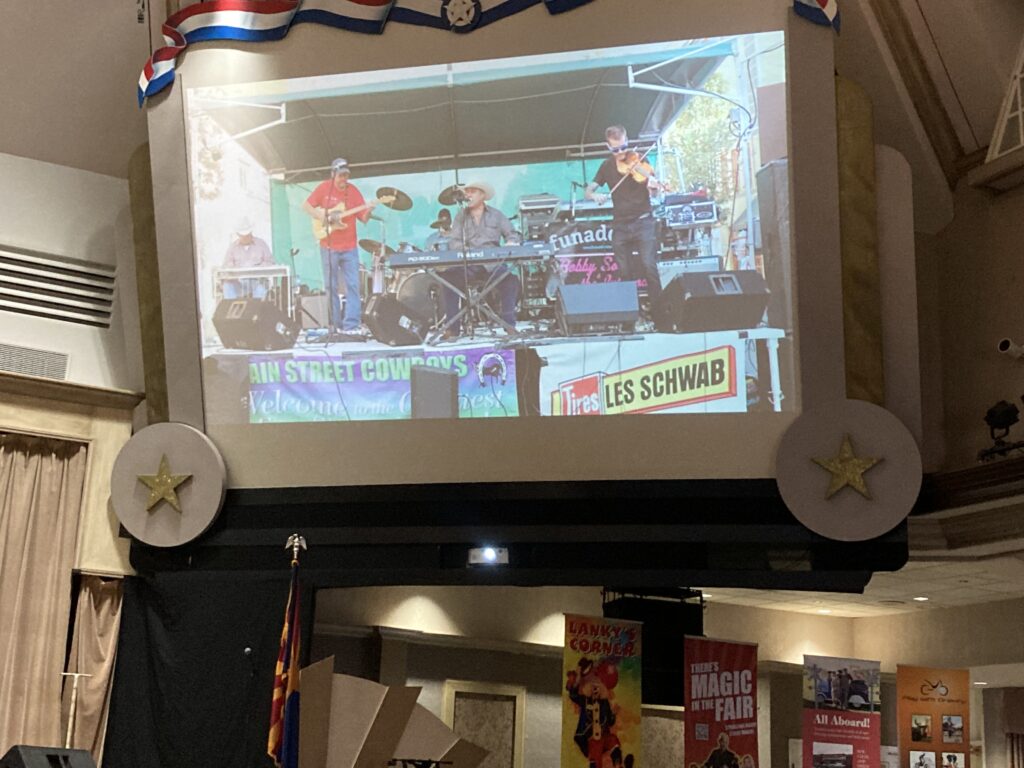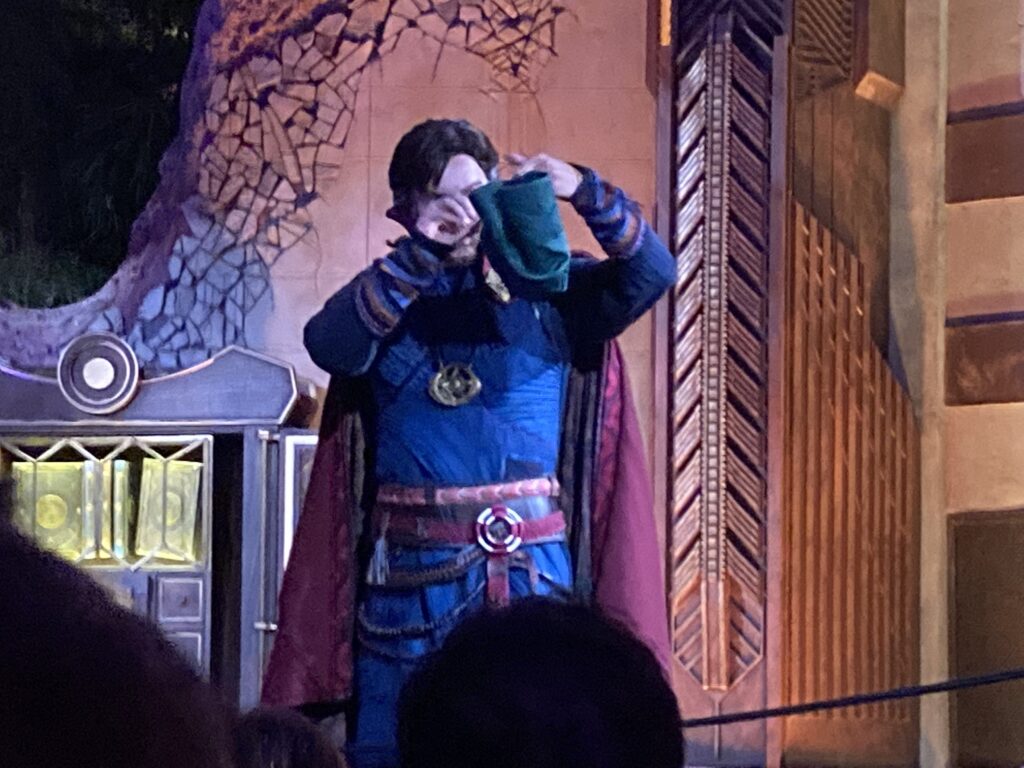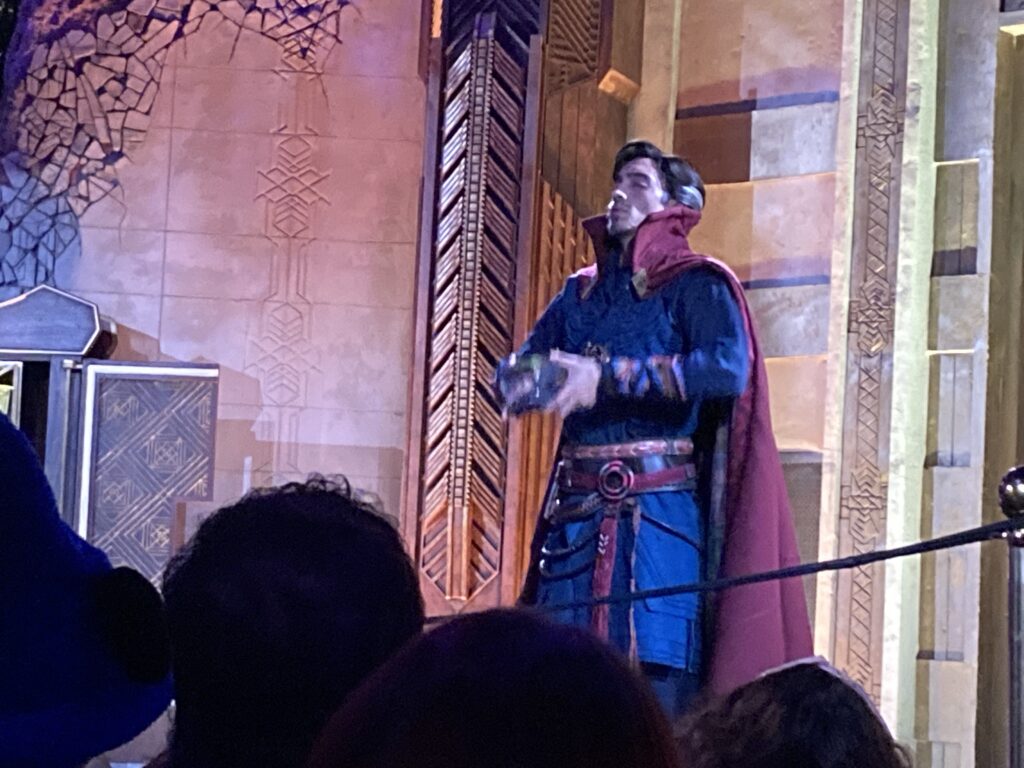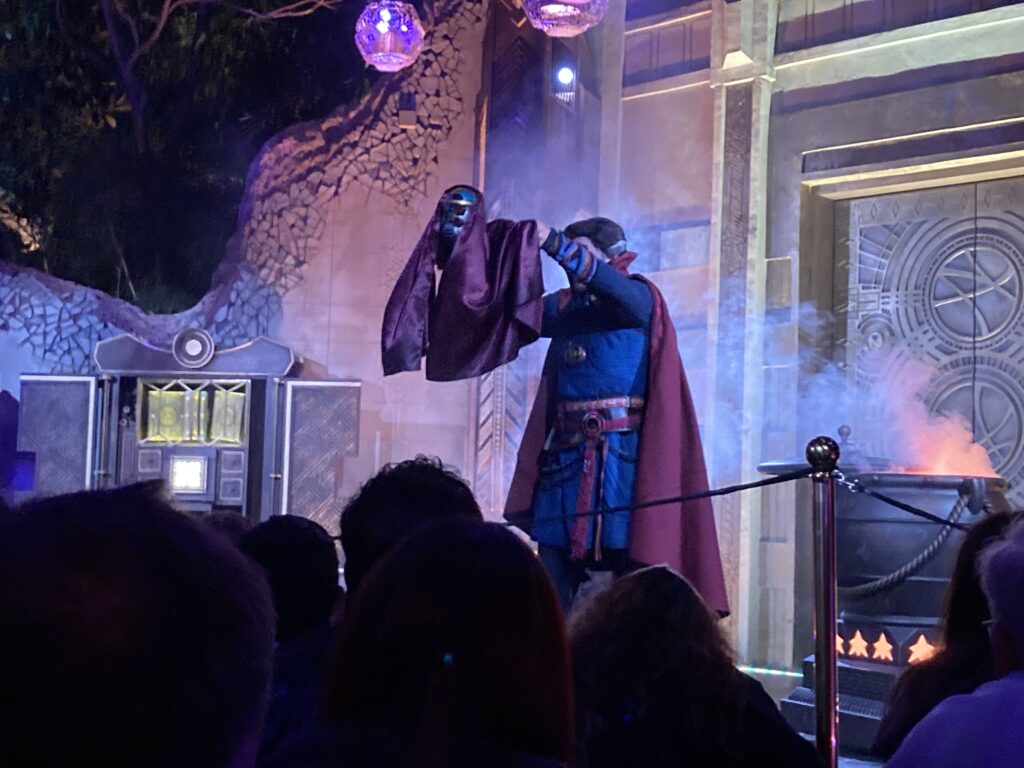If you’re not reading Nick Lewin’s Blog, you are missing out. He just put out a post called “new rules for magicians 2021“, which are 8 rules for magicians. Each of them is solid advice. I want to comment on his first one, which is:
New Rule #1 Realize that not everyone is fascinated by Houdini.
This is 100% true. It’s just a name, not someone that YOU are personally acquainted with. Using Houdini in most instances is a lazy way to find a hook. Usually it’s used in an escape and someone says that they will escape faster than Houdini did. Let’s make an analogy, if I went to see an show and the signer said they were going to sing 9 to 5 better than Dolly Parton, that doesn’t draw me in at all. Just sing the song.
One rule I’ve had in my show for a long time is that I don’t mention any other magician in my show. There’s a reason for that, most people don’t have a connection to that. Not too long ago a local magician had a huge bit where he described a trick that Criss Angel did, but then he related that to a just ok coin trick. Watching this, my impression was that he told me about a TV show he watched where a magician did a way better trick than what the local magician is about to show me. Mentioning the magician took away from the trick.
I think the one exception to mentioning another magician is if you have a relevant personal reason to do it. If you were on Fool Us, then mentioning you did the trick for Penn and Teller makes sense. If you invented a trick for David Copperfield, then mention it. Name dropping those has meaning, just mentioning another magician because you were too lazy to write something better is just that, lazy.
-Louie
Tag: magic show
Video Showcasing…
I’m home now from a booking conference I was at earlier in the week. One of the things that happens at these are video showcases. These are up to three minute videos that play usually in between the live act showcases. There were a couple of good video showcases and a lot of bad ones.
The number one thing about a video showcase is to use still images sparingly and use them with purpose. One of the showcases I watched was of a musician who does a roving act and he does a lot of audience engagement and pulls around a wagon that looks really cool. His video was all still images with him singing a song played over. It didn’t really give any context to what he does or how a buyer would use it.
The next worst thing is to play a video of you playing a gig. One person played a video him that had bits of several songs, but they were all at the same venue. It was visually boring. At least have several venues…and record them from the soundboard, they audio will turn out much nicer and easier to listen to.
Another thing is that news footage is great…but trim out all the stuff that’s not you! One act had a nice news clip, but they kept in the intro of the two newscasters bantering about the weather or whatever at the beginning, essentially wasting the buyers time for 15 seconds. Then they left in the extro of the two newscasters banters about what was coming up next, once again wasting the buyers time.
The final thing is you don’t need to use the full 3 minutes (or whatever the max is) for your video. If you can tell the buyers what you need in 75 seconds, great…you don’t need to bore them with redundant info for the remaining time. Trimming out the fat is key!
Those are some tips if you are putting together a video showcase or making a sizzle reel!
-Louie
Gas Prices…
There’s a social media group of performers and they’re complaining about gas prices. Here’s the thing, gas prices were higher in the past than they are now. We had higher gas prices in 2008 and from 2011-2014 and that’s without adjusting for inflation, that’s a straight dollar to dollar comparison.
Price comparison source: US Energy Information Assoc
Some people are talking about adding a gas surcharge to their show fee. I think this is a bad idea. Here’s why, it makes buying a pain for the client:
How do you implement it?
If gas prices drop, so you remove the surcharge?
What date do you use for your price threshold?
Instead of having your worth tied to the price of a gallon of gas, you should just raise your rate. I’m assuming you’re worth more than you were last year, or five years ago. Your show has improved, maybe you’ve picked up some national TV credits, or had a video go viral.
If you’re doing the same show they same way you’ve been doing it for a decade, this may be a hard sell to your client and tying your price to the cost of gas might be the only way you can get a pay raise.
Let’s do some math.
For a local gig, let’s say your round trip is 100 miles, your car gets 20 miles per gallon and gas in 2021 is up from 20 cents to just below 70 cents per gallon from 2019. That means you’ll burn 5 gallons of gas at 70 cents a gallon, and it will have cost you $3.50 more in gas to drive 100 miles than it did in 2019.
Are you honestly going to put a line item for $3.50 in gas on your invoice?
If I was booking someone and they wanted me to pay $3.50 for a gas surcharge, I’d laugh in their face. You’re not teenage driver getting their friends to chip in on a trip to the mall.
If your profit margin is soo tight that $3.50 will make you unprofitable, you need to seriously reassess your business!
Be better than you were last year, raise your rate, and use that to justify why you’re worth more.
-Louie
Dr. Strange Magic Show…
Last week I was at Disneyland and went over to the California Adventure park to see the Dr. Strange show. Essentially this was a 12 minute magic show. The magic trick were essentially used as “live special effects”, and not as magic tricks. I don’t think there’s anything wrong with doing them this way, it’s just a different mindset.
There were basically four tricks: Devils Hank, Ring to Flower, Zombie, and an Appearing Pole. This show was a great example of a themed magic show. Every trick was used with a purpose to further along the story. The Zombie was well motivated, but went way longer than it should have gone.
Here’s video I found online of the full show:
This show is also a good example of why when I do themed shows my role is more of a lecturer than a character that’s presenting a show. Performing as someone other than me doesn’t really interest me, and I’m not a good enough actor to do that.
22 Days of Getting Better…
A couple of days ago I finished up my run at a 22 day gig (that took place over 30 days). I’m reflecting on all of the work I got done on the show over the 66 shows I did. Every show I was working on something. Sometimes it was a full routine, and sometimes it was small, like adding some confetti to a bit in the that I do with a kid.
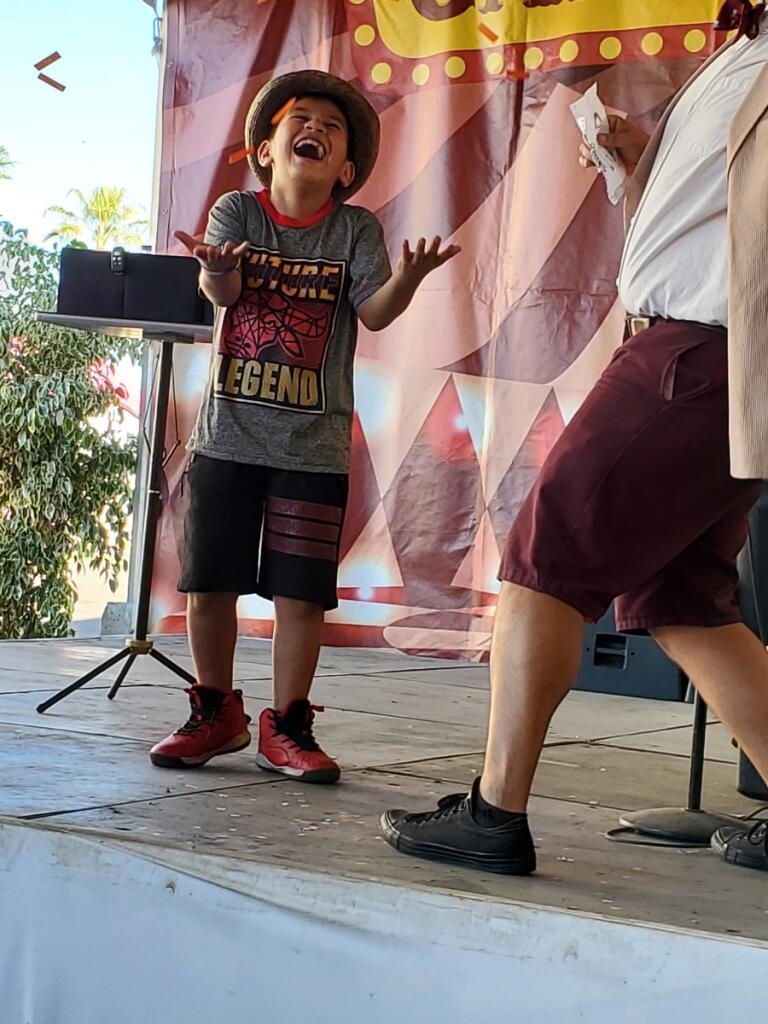
For me, it’s all about trying to get better every show. Yes, there are some shows where you shouldn’t be trying or tweaking and you do just all A material. However I have the most fun when I can get on stage and play with ideas.
Here’s my stats for new stuff over the last month:
Hand held mic technique went from a D to a C+
Invisible deck like routine went from D to a B
Spoon and Fork went from C to B
Drawing routine went from B to A
Foam hand went from D to C
Game show went from D to B
Having 66 shows to start to level up routines is a good use of the run of shows! I feel like I left there a better performer, writer and magic creator!
-Louie
Back At Virtual Again…
I thought I was done with the virtual shows, but last night I was back at it! Doing this show as a nice change of pace from the three shows a day I’m doing at a state fair all month.
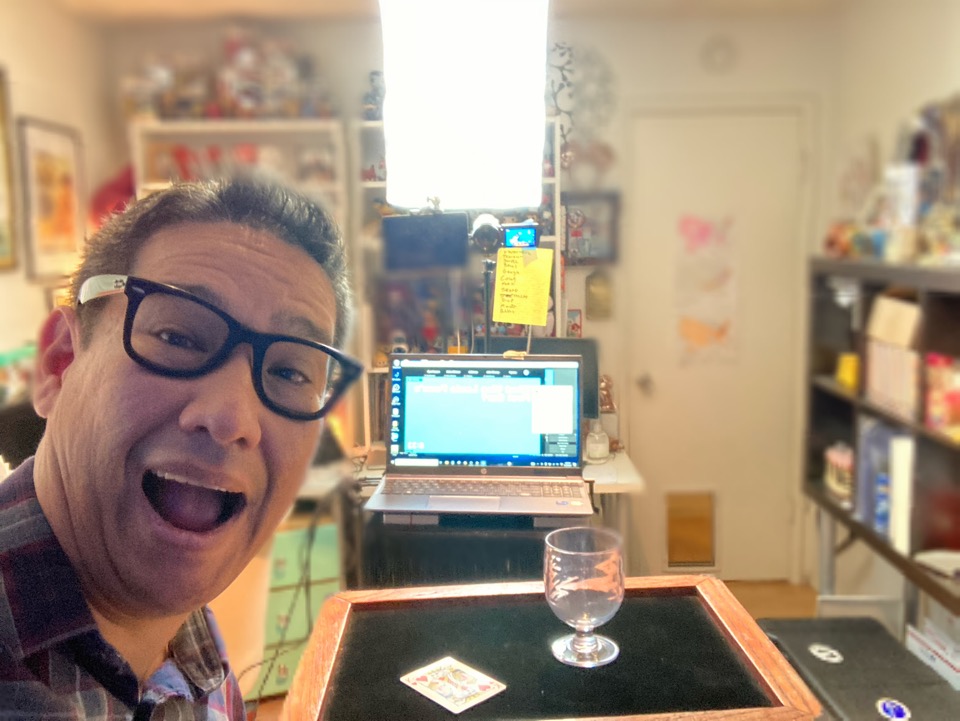
This was a corporate gig that was for the employees and their families. This was a fun group! One thing I’ve noticed with virtual shows is the time really flies by, compared to a live show. I think that with an in person show, time travels soo much slower. I think it’s because I’ve done it in person soo much that I have to think less. With the virtual I’m constantly on my toes.
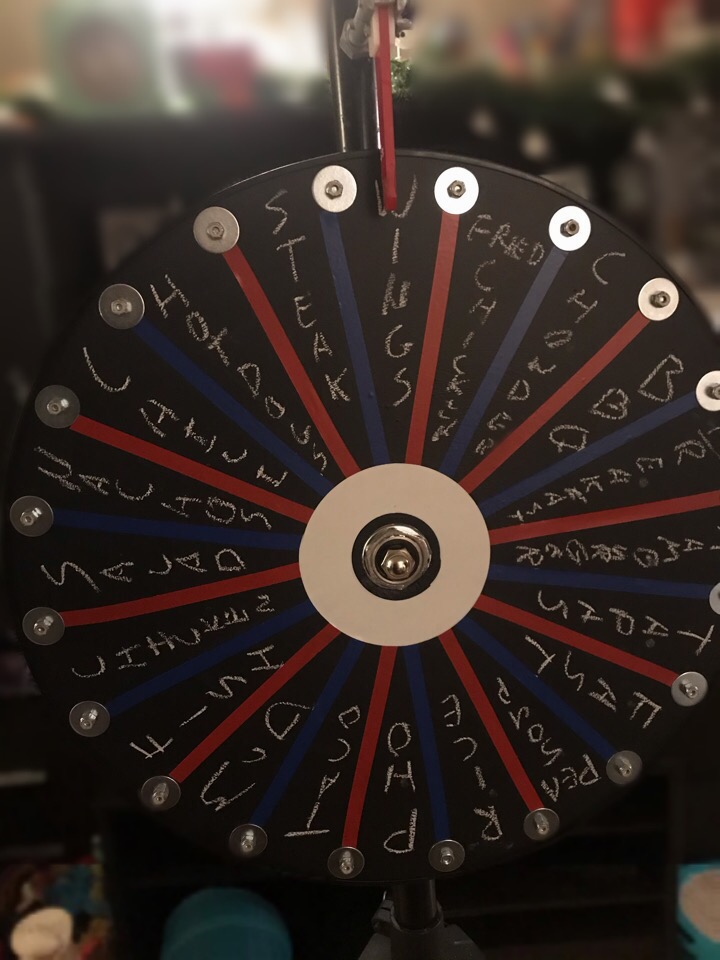
In my virtual show my daughter usually runs the production end of the show and in it I normally do a prediction that she helps me out with, but unfortunately she wasn’t available last night. So I had to had to do it all solo. Running the production part is easy, but doing the prediction was going to be a bit of a challenge. Normally the prediction we do is my “Wheel of dinner”. I was going to modify it to a “wheel of costumes” as the client wanted some Halloween themed tricks. The problem was how I was going to accomplish the trick. With the wheel there are 20 options and it doesn’t force. There are ways to force from the wheel, but I really like just spinning it. It feels random.
It hit me, a while ago I had bought Manifest by Danny Weiser, which is a prediction on a luggage tag and never used it. I hung the luggage tag in the background, and during the course of a trick, I asked someone what they were going to be for Halloween. Then at the end of the trick, I did the reveal of the prediction. It played really well. I like a prediction, where the prediction is not the routine, but a bonus…especially because I takes a lot of the heat off of the method!
-Louie
Levelling Up Magic…
This week is the final week of my “fair” season. I end my run on Saturday after performing 66 shows over 22 days at a State Fair. I really like performing at state and county fairs across the USA in the summer. One of the things that I really like about it is that in my preshow I get to work on tricks and jokes that aren’t ready for the main show.
In my show I have materials that’s A, B and C material. A is the stuff that’s finished and plays well. B are tricks that aren’t quite done yet, they’ll be things missing, like maybe the trick is there, but needs some jokes, or the routine is there, but the method or something isn’t quite right. Finally, there’s the C material, and that’s stuff that’s just ideas.
My goal for the summer is to move as much A material out of the show as I can. I do that by levelling up all the other stuff. I work hard at figuring out what’s missing from the B material, and try to move it up to the A level. Once that happens, I stop doing an A routine and put the former B trick in it’s place.
Then there’s the C material, I work on that during my preshow. The goal is to move it to B or drop it. Some ideas are just that…ideas. They may be great ideas, but they’re not for me or my show. It’s good to learn that fairly early on, so you don’t waste too much time with them. This is also why I’m a huge fan of getting material on stage as quickly as possible. That’s the easiest way to figure out if there’s something there or not.
It’s also crazy how quickly things can level up if you put in the time and effort and you have three shows a day for 22 days to work on them. For example the version of the Invisible Deck that I started doing this month (see an early version here) has moved from a C trick to B+ or A- routine in a few weeks. Once I got the technical side down and then found the presentational hook, it was just polishing it up. The routine works as is now, but there is on small technical thing I’d like to figure out…however if I never solve the problem, the routine works great in it’s current form.
I’m very fortunate to have a venue to actively work on new material!
-Louie
Credits for your Show…
On New Year’s Day of 2020 I saw Darren Brown’s show on Broadway in New York. It was a great show and during the intermission the guy next to me was looking at the program and mentioned there were a lot people listed in the credits for a magic show.
Somehow that guy’s comment popped back into my head and got me thinking about who I would have to credit for my show. Looking at the tricks in the show, I’m trying to name the creator of the trick, move or principle that I’m using. For example, I use a classic force, and while Reginald Scot is not the inventor, he’s the oldest reference I could find for the move. For the technical end of things I’m calling the creators “magic consultants”. Then I have a column for “writers” and my criteria is if the line didn’t come out of my head, then it has to be credited to someone else. If I know who wrote the line, then their name is listed as a “writer”. If I don’t know who wrote a line or created a trick, then I’m going to list them as “unknown” and for each unknown I list, it will have a number after it. This also applies for moves/tricks/routines. For example, let’s say I use 2 stock lines and a trick who I don’t know the inventor of, then it would be “unknown (1)”, “unknown (2)” and “unknown (3)” listed in the appropriate categories.
Here’s what my credits look like:
Magic Consultants:
- Ralph W. Hull
- Craig Filicetti
- Max Krause
- Manual llaser
- Valdo
- Unknown (1)
- Reginald Scot
- Mizogouchi
- Joseph Hartz
Writers:
- Matt Baker
- bill robison
- Steve hamilton
- Eric haines
- john park
- Rene Bibaud
- matt disero
- jim steinmeyer
- Randy Cabral
- Unknown (2)
When you read my list, you’ll notice that Jim Steinmeyer is listed as a writer, not magic consultant. This is because I use a gag from his egg bag routine, in a different context. I’m using the joke, not magic routine.
This was a fun thing to do, and made me think about who has contributed to my show!
Table Top Prop Management…
When it comes to prop management, I’m not the best, but I do have a system. All of my hand held props are in a bin on my table. I don’t do any performing on the table top, it all happens in my hands, so the table simply holds my props. Here’s a peek into my table top bin:
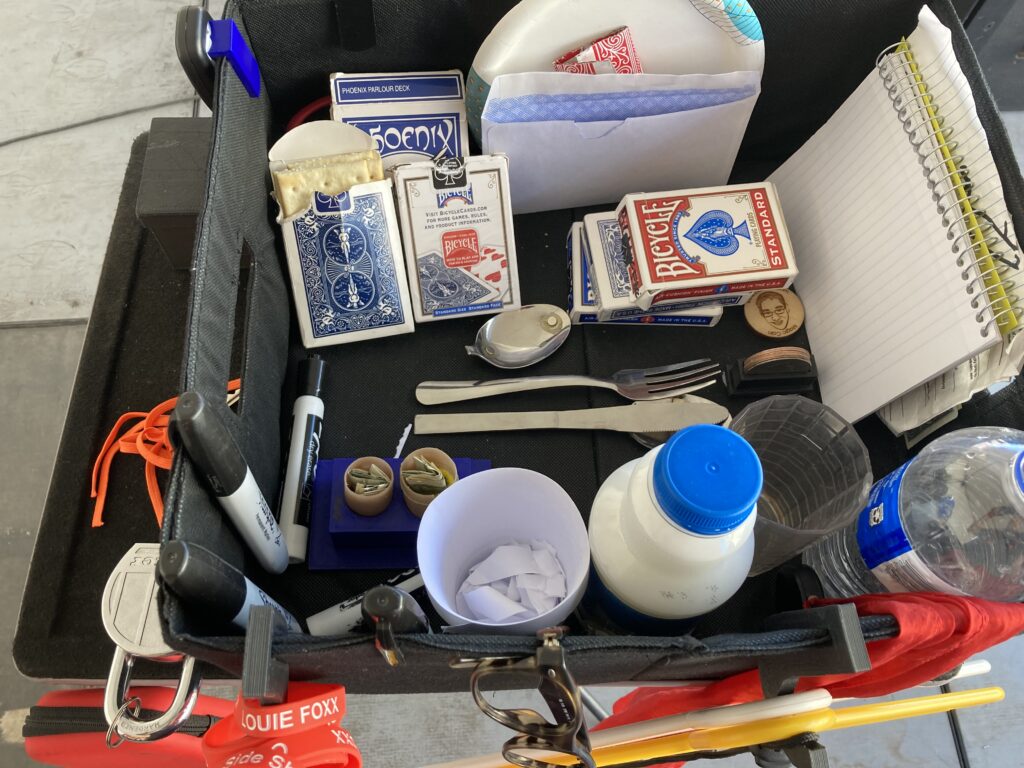
As things get used they either go back into their space in the bin if the trick is instantly reset at the completion of the trick. If the trick doesn’t reset, it goes into my case which is to my left and holds a two larger props I use. This system works well for me when doing three shows a day at fairs. It makes it easy for me to assess what tricks need to be reset and make sure nothing gets missed.
I’m sure there are better systems. I know some two person acts have the “assistant” bring out each routine and then remove the props at the end of the routines. The advantage of that is the show is getting packed up while the show is happening. I’ve used this system in the past when I’ve performed with my daughter. It’s a really nice way to do it, but it’s not something in can do in 90% of my shows.
What’s probably the most important thing is that you have a system of some sort to try to eliminate or shorten dead time while getting or putting away props. Sometimes a joke or interesting patter can fill this time. Other instances, simply having a prop that’s easy to grab is the best option.
-Louie
Learning to Rock the Mic…
I’m still working through using a handheld microphone in the show. There’s definitely a learning curve. I’m getting better at it, but it’s an uphill slog. I have a lot of points where I’m holding the mic in my hand, then put it in the stand for a moment, only to quickly remove it.
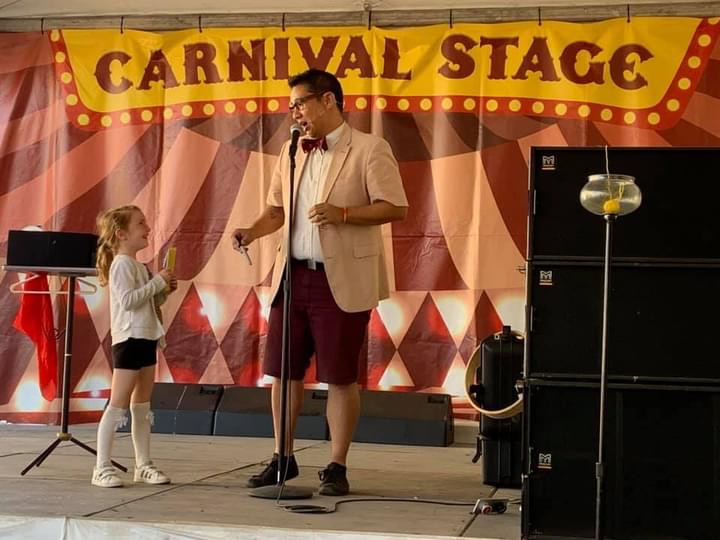
I really like how when I’m holding the mic in my hand, I’m a lot more expressive with my hands than when I’m wearing just a headset. I think holding the mic makes me more aware of what my hands are doing. It also puts a hand up near my face, so I can play more with motion that’s motivated.
As I get deeper into my show, I’m realizing that there’s going to be a lot of spaces where I’ll need to use the mic neck holder. That’s fine, I’ll need a joke to address it. Today I have to figure out how to do the reveal of the object in ball of yarn that’s the end of the longest routine in the show. I had to chunk this routine out into three bits to figure out the blocking, and today will be the third bit to figure out.
-Louie
